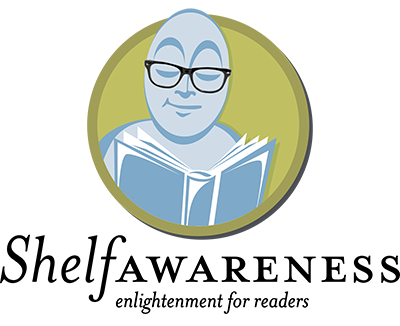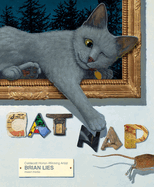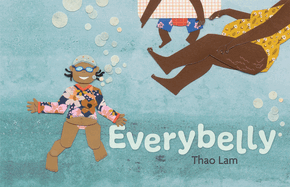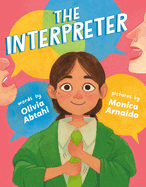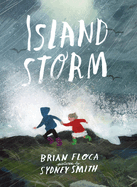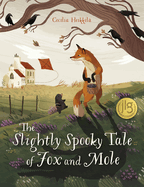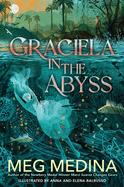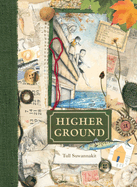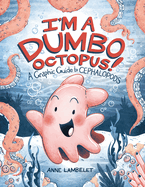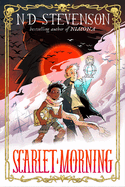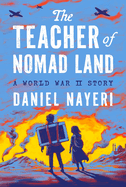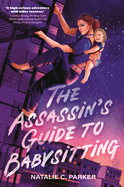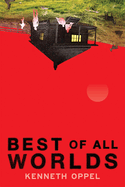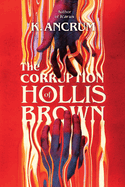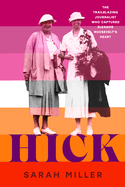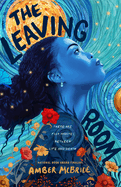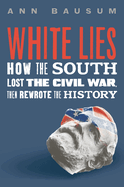Friday, December 12, 2025
Our 2025 Best Children's and YA Books list features some of the most creative, spellbinding, or extraordinarily illustrated titles Shelf Awareness has reviewed this year. Young readers will find realistic stories about bellies and being bilingual, enchanting adventures through storms and art history, and a slightly spooky tale with utterly charming characters. Middle-grade readers are shown World War II and the very bottom of the ocean, two cli-fi novels, one fantastical and filled with pirates and another that is (scarily) possible but remarkably hopeful, and an underwater fantasy with a ghost protagonist. And our young adult picks feature thoroughly researched nonfiction, uncommon love stories, and an absolute blast of a babysitting adventure. Click through to read our reviews of the top kids' titles for 2025. (Shelf Awareness's Best Adult Books are here.) --Siân Gaetano, children's and YA editor, Shelf Awareness
Picture Book
Cat Nap by Brian Lies (Greenwillow Books)
Everybelly by Thao Lam (Groundwood Books)
The Interpreter by Olivia Abtahi, illus. by Monica Arnaldo (Kokila)
Island Storm by Brian Floca, illus. by Sydney Smith (Neal Porter Books)
The Slightly Spooky Tale of Fox and Mole by Cecilia Heikkilä, translated by Polly Lawson (Floris Books)
Middle Grade
Graciela in the Abyss by Meg Medina, illus. by Elena Balbusso (Candlewick)
Higher Ground by Tull Suwannakit (Crocodile Books)
I'm a Dumbo Octopus: A Graphic Guide to Cephalopods by Anne Lambelet (Graphic Universe/Lerner)
Scarlet Morning by ND Stevenson (Quill Tree Books)
The Teacher of Nomad Land: A World War II Story by Daniel Nayeri (Levine Querido)
Young Adult
The Assassin's Guide to Babysitting by Natalie C. Parker (Candlewick)
The Best of All Worlds by Kenneth Oppel (Scholastic Press)
The Corruption of Hollis Brown by K. Ancrum (HarperCollins)
Hick: The Trailblazing Journalist Who Captured Eleanor Roosevelt's Heart by Sarah Miller (Random House Studio)
The Leaving Room by Amber McBride (Feiwel & Friends)
White Lies: How the South Lost the Civil War, Then Rewrote the History by Ann Bausum (Roaring Brook Press)
Cat Nap
by Brian Lies
Brian Lies's visual delight Cat Nap is a feline-fueled romp through 10 masterpieces of art history, all lovingly re-created by hand. The story opens in a late-afternoon living room where a sleepy gray kitten stirs. When a mouse darts by, Kitten leaps after it into a Metropolitan Museum of Art poster, and the chase begins--through time, culture, and media. Caldecott Honor winner Lies (Little Bat in Night School) sends Kitten on a chase through artworks from diverse cultures and eras: an ancient Egyptian limestone carving, a 14th-century illuminated manuscript, a Japanese ink drawing, and more. In each piece, the chase adapts to the aesthetic, subject matter, and mood of the work and Lies's palette shifts to match the original works. The 3D nature of the illustrations, crafted from materials like clay, paper, and glass, gives many pages a tactile, museum-like feel. But this isn't just an artistic showcase--Lies brings readers a heartfelt adventure with lyrical text, handcrafted visuals, and an imagination-provoking journey through global artistic traditions. --Julie Danielson
Everybelly
by Thao Lam
Everybelly is an amusing, original look at bodies and the idea of home, narrated by an inquisitive youngster who stands tummy-high to their neighbors.
One summery day, a child and their mother join neighbors at a local pool. Readers are first introduced to Mama, whose belly was where the narrator "used to live... until I grew too big." The brown-skinned child wears a flowery swim shirt, pink bottoms, and a polka-dot swim cap, as they discuss their neighbors. The diverse cast speaks to this child's easy acceptance of all bellies, though they are puzzled by "flat" ones: Why do people "work hard to keep their bellies flat" when they can fill them with "donuts in sprinkles, har gow, gimbap..."?
This Kirkus Prize for Young Readers' Literature winner showcases a delightful parade of funny, sweet, and sometimes misunderstood moments. Thao Lam (One Giant Leap) consistently employs a child-centric point of view in language and in her lively, innovative cut-paper collage illustrations. Brimming with goodwill, the child's cheerful spin on everything they encounter creates a welcome place for readers to feel at home. --Lynn Becker, reviewer, blogger, and children's book author
The Interpreter
by Olivia Abtahi, illus. by Monica Arnaldo
Olivia Abtahi (Perfectly Parvin) and Monica Arnaldo's first picture book collaboration, The Interpreter, is an earnest and endearing depiction of a child who becomes overwhelmed while serving as translator for her Spanish-speaking parents.
While some kids have only one job--"to be a kid"--Cecilia has two: in addition to school and soccer, she acts as interpreter for her Spanish-speaking parents. Cecilia goes with her caretakers to all sorts of "grown-up places" and assists with appointments, making small talk with other parents, and translating phone calls and websites. Cecilia works so much "overtime," she's exhausted!
Abtahi delivers a clever, straight-from-the-heart story about the emotional and physical toll Cecilia experiences. Arnaldo (Mr. S.) employs dynamic watercolor and pencil crayon art to emphasize Cecilia's two distinct roles, illustrating the girl "working" in an oversized suit and showing a frenzy of activity by overlapping and blending colored speech bubbles (blue for English, orange for Spanish). This bilingual narrative is an excellent, resonant picture book for kids and caretakers alike. --Lynn Becker, reviewer, blogger, and children's book author
Island Storm
by Brian Floca, illus. by Sydney Smith
In the breathtaking Island Storm, Caldecott Medalist Brian Floca (Locomotive) and Hans Christian Andersen Award winner Sydney Smith (I Talk Like a River) tell the story of two siblings on an island who head to the shore to see a storm agitate the sea. As the storm intensifies, the children flirt with danger.
On one level, this is a simple adventure tale: two children outrun a storm. But it's one that holds many layers of meaning--this brush with danger is a test of resilience and captures the children's unwavering bond. Illustrator Sydney Smith depicts the storm's kinetic energy--its force and beauty--building tension through a striking watercolor and gouache palette: massive dark clouds loom over the island, later juxtaposed with clear blue skies as the storm recedes. A masterful blend of poetic language and dynamic illustration, this novel delivers both an edge-of-your-seat adventure and a moving meditation on perseverance and the storms siblings weather together. --Julie Danielson
The Slightly Spooky Tale of Fox and Mole
by Cecilia Heikkilä, transl. by Polly Lawson
Swedish author/illustrator Cecilia Heikkilä's The Slightly Spooky Tale of Fox and Mole is a lightly gothic tale that illustrates the dual perils of taking more than we give and not asking for what we need.
Fox and Mole are countryside neighbors. In autumn, Mole comes round to Fox's every evening to enjoy a cozy spread and a storybook about a raccoon "transformed" into something monstrous. Eventually, Mole eats all of Fox's provisions and forgets Fox's birthday, too. "Something thorny found its way to Fox's heart," and Fox is transformed.
Heikkilä's digitally edited watercolor, gouache, and pastel illustrations track her narrative's theme of transformation perfectly, primarily through color. Bright reds, lovely sky blues, and pure emerald greens vanish from her spreads as Mole and Fox's friendship tips off balance, replaced by cooler-toned creams, browns, and olives. Heikkilä's narrative seems informed by Aesop's fable of the ant and the grasshopper, but her moral takes a notably different direction: only by restoring the balance of mutual care in their friendship do Fox and Mole set each other to rights again. That's not spooky at all. --Stephanie Appell, freelance reviewer
Graciela in the Abyss
by Meg Medina, illus. by Anna and Elena Balbusso
A cursed harpoon that can kill sea ghosts brings together a blacksmith's son and a forlorn spirit in the wondrous and enthralling middle-grade novel Graciela in the Abyss.
One hundred years ago, the "ruthless" fisherman Fernando Gonzalo and the "pitiless" blacksmith Ignacio Leon forged a weapon to kill sea spirits. Now, Ignacio's great-grandson, Jorge Leon, has found the weapon. He steals the harpoon, but Fernando, now a vengeful ghost, attacks and reclaims the weapon, plunging Jorge beneath the waves. Graciela, a sea specter, begrudgingly agrees to help the boy find and destroy the harpoon.
The awe-inspiring characters in this mesmerizing folkloric story display a dazzling defiance against unjust power. Newbery Medal winner Meg Medina (Merci Suárez Changes Gears) uses hypnotic prose to conjure an oceanic realm teeming with wonders that speak to the interconnectedness of land and sea. Anna and Elena Balbusso create enchanting mixed-media art featuring diaphanous shapes and layers of texture. Seemingly insurmountable odds and grief bring suspense to a supernatural underwater tale as immersive, majestic, and alluring as the deep sea itself. --Samantha Zaboski, freelance editor and reviewer
Higher Ground: A Graphic Novel
by Tull Suwannakit
Higher Ground, an innovative children's graphic novel by Tull Suwannakit (illustrator of Sad, the Dog), is a moving account of a family relying on each other and a bit of hope in the face of a natural disaster.
A "frail and weak" grandma, her two grandchildren, and their pet rabbit are unable to evacuate before an unprecedented storm, so they take refuge in a shed on their building's rooftop. The next morning, the "Great Flood" has ravaged their city and all they see is "water all around."
This cli-fi story's depiction of adaptation, the importance of family, and overcoming adversity is affecting and delivered in an uncommon format: Suwannakit combines elements of picture books, journals, and graphic novels in a multilayered design. Stunning, dynamic watercolor, graphite, acrylic, and gouache illustrations bolster sparse text, and bird's-eye-view depictions of the journal pages provide facts and instructions readers can return to repeatedly. This captivating work is both a warning about the effects of climate change and a reflection on the power of resilience and hope in the face of disaster. --Lana Barnes, freelance reviewer and proofreader
I'm a Dumbo Octopus!: A Graphic Guide to Cephalopods
by Anne Lambelet, illus. by Anne Lambelet
Animal-loving kids will devour I'm a Dumbo Octopus!: A Graphic Guide to Cephalopods, Anne Lambelet's charming, colorful, and funny guide to everybody's favorite eight-armed sea creatures.
Grimpy the dumbo octopus knows everything about the other cephalopods in the ocean. Grimpy knows how underwater camouflage works, which octopuses can use tools, and how cephalopods master all kinds of escapes. But Grimpy can't fly like the Japanese flying squid, squirt ink, or produce light. Is there anything that makes a dumbo octopus special?
Not only is I'm a Dumbo Octopus! laden with cool facts--such as the difference between octopus arms and octopus tentacles--but Lambelet's trademark art style makes every squid, octopus, cuttlefish, and nautilus a cuddly friend. Lambelet (Dogs and Their People) uses expressive character design to create a quiet and agreeable fictional story within her work of nonfiction. Backmatter includes a useful guide to the anatomy of a cephalopod as well as a photo of a real dumbo octopus, which is specially "built to survive in one of the deepest, darkest environments on the whole planet!" --Nicole Brinkley, bookseller and writer
Scarlet Morning
by ND Stevenson
Author/illustrator ND Stevenson (Nimona) creates his first middle-grade fantasy with Scarlet Morning, a suspenseful and exceptionally magical illustrated novel that follows two orphans determined to change--and save--a world destroyed by adults.
Once, the world wasn't broken: "the sky was blue, and the spray of the sea wouldn't burn your flesh." At that time, the people of Dickerson's Sea were ruled by a beloved Queen. But the "blackhearted" Scarlet Morning killed the queen and brought a dreadful storm that destroyed the sea, the birds, and memory itself. Orphans Viola and Wilmur never knew this world; they only know life with Hestur, their caretaker, on the island of Caveat in Dickerson's Sea.
Stevenson delivers a story full of twists and original genre-blending interpretations of magic in Scarlet Morning. Laced with horror and humor, the story perfectly balances the whiplash of a traditional high fantasy pirate adventure set in a terrifying world reshaped by adults. More than 100 black-and-white illustrations in Stevenson's signature style set tone and add nuance to the unfolding mysteries. --Nicole Brinkley, bookseller and writer
The Teacher of Nomad Land: A World War II Story
by Daniel Nayeri
Iranian-born author Daniel Nayeri has received a Michael L. Printz Award, a Newbery Honor, a Middle East Book Award, and a Walter Dean Myers Award Honor for his middle-grade novels Everything Sad Is Untrue and The Many Assassinations of Samir, the Seller of Dreams. The Teacher of Nomad Land, winner of the 2025 National Book Award for Young People's Literature, is a tightly crafted odyssey about two siblings in World War II Iran.
After occupying British soldiers kill their father, 14-year-old Babak and nine-year-old Sana, now orphans, leave their hometown. A Nazi spy ostensibly searching for a 13-year-old Polish Jewish boy finds the siblings and draws them into a multifaceted conflict with no straightforward solutions. Nayeri's gifts for understatement, restraint, and split-second swings between humor and emotional devastation are on full display, and make for an affecting read. At times, the novel has the feel of a parable, but the specificity of Nayeri's characterizations and dialogue keep it grounded in "the land of the here and now." Surely Nayeri will someday publish a less-than-perfect novel--but he hasn't yet. --Stephanie Appell, freelance book reviewer
The Assassin's Guide to Babysitting
by Natalie C. Parker
An invincible teen must defend herself and her one-year-old babysitting charge in this energetic and emotional thriller packed with bitter battles, heartrending grief, and hard-won trust.
Tru Stallard is a bastion. If Underhill, the peacekeeping taskforce of "talents," knew the 17-year-old was nigh invincible, they would lock her away for fear of her powers. Her secret life is imperiled during a babysitting gig: Logan Dire, her adoptive father and the legendary Ghoul of Kansas City, is assassinated by Underhill for supposedly murdering a one-year-old. Tru and her friends know Logan has been framed: they are currently minding the very-much-alive baby. That baby, it turns out, is a bastion--one Underhill wants the world to think is dead even as it hunts her.
The Assassin's Guide to Babysitting by Natalie C. Parker (The Devouring Wolf) has exciting superpowered feats and fight sequences; sly scheming; Sapphic love; an indestructible baby; and a teddy bear of a man in an assassin's body. Tense moments pull unforgivingly taut or break brilliantly under satisfyingly solid quips and grim humor. With this, Parker layers a clever plot and gripping suspense atop a gratifyingly tender and funny narrative. --Samantha Zaboski, freelance editor and reviewer
Best of All Worlds
by Kenneth Oppel
In Best of All Worlds, Printz Honor-winning author Kenneth Oppel (The Nest) delivers an inventive, dramatic work of speculative fiction about accepting uncertainty and surviving change.
Thirteen-year-old Xavier Oak reluctantly joins his father and pregnant stepmother on a trip to the family cottage. The next morning, Zay wakes to discover that the cottage is no longer lakeside but situated on rolling pastures with crops and livestock. Trial and error suggest the Oaks are trapped in a dome with advanced technology. The Oaks slowly learn to homestead and provide for themselves--until three years later, when the Jackson family arrives.
Oppel grounds the novel's surreal elements in its well-wrought characters. Zay's first-person narration is immensely relatable as he mourns the loss of life as he knew it and bears life as it is. Oppel brilliantly withholds confirming the truth until the novel's crucial climax, ensuring readers will race through the chapters to Oppel's expert landing of a close. An excellent read-alike for fans of Neal Shusterman and Gary Paulsen. --Cristina Iannarino, children's book buyer, Books on the Square, Providence, R.I.
The Corruption of Hollis Brown
by K. Ancrum
The Corruption of Hollis Brown--longlisted for a 2025 National Book Award--by K. Ancrum (The Weight of the Stars) is a singularly intimate supernatural YA romance that follows a self-destructive boy who shares a body and forges an exhilarating connection with the ghost possessing him.
Seventeen-year-old Hollis Brown is an impulsive "asshole." Thus, he gives little thought to bargaining with a mysterious teenager living in the woods: Walt will help Hollis improve himself, Hollis will give Walt food and shelter. Walt, however, is a ghost, and possesses Hollis.
In short, vignette-like chapters, two broken boys find pieces in one another to allow themselves to become whole. Ancrum redefines possession and brilliantly tackles self-loathing, depicting two young men openly expressing emotions and tending to one another's needs. A heady passion between Hollis and Walt ignites through tender moments of vulnerability, devilishly bold flirting, and incomparable intimacy. There are agonizing twists and exceptionally well-developed side characters, making this a transcendental read. --Samantha Zaboski, freelance editor and reviewer
Hick: The Trailblazing Journalist Who Captured Eleanor Roosevelt's Heart
by Sarah Miller
Sarah Miller, author of Hanged!, pens an intriguing, engrossing young adult biography in Hick, about pioneering female journalist Lorena "Hick" Hickok. Miller, like her subject, "lure[s] readers in at the start and hold[s] them captive until the end" as she recounts Hick's life, her career, and her complex relationship with First Lady Eleanor Roosevelt.
Miller delivers a well-researched, fascinating biography of a person who played an important and uncommon role in U.S. history. The author gives a crystalline depiction of Hick's frustrations as a woman in a male-dominated field ("My God, how tired I get of being a woman reporter!") and viscerally portrays the struggles Hick and Eleanor experienced as women in a queer relationship under the blinding lights of national politics. Readers who enjoyed Most Dangerous by Steve Sheinkin or Amelia Lost by Candace Fleming will likely appreciate both Miller's writing and the extraordinary life of Lorena Hickok. Miller includes a note on language and the use of "queer," as well as extensive backmatter, an author's note, sources, and notes. --Jen Forbus, freelancer
The Leaving Room
by Amber McBride
Author and poet Amber McBride's bewitching, breathtaking debut, Me (Moth), won a slew of awards and was a National Book Award finalist. Her third novel-in-verse for young adults, The Leaving Room (also a National Book Award finalist), is a mere hair's breadth away from the majesty and sheer power of her debut.
Gospel is a Keeper, and it is her job to convince the dead to move on through her Leaving Room. She, however, is "soulless" and may never leave: "there/ are/ no/ doors." Then, suddenly, one appears. McBride's plotting, world building, and formatting make The Leaving Room an extraordinary, irresistible read. The book is broken into eight parts, each with a title, name, or stage of grief, a description, and a number that decreases as the story continues: "Stage 1: Denial/ (Maple, Age 5)/ 03:30." McBride's text is brilliantly sparse as the central mystery builds, but there is a wholeness in the spaces between her words, an expansiveness that binds. This book is for young poets and children and teens who love the written word. --Siân Gaetano, children's and YA editor, Shelf Awareness
White Lies: How the South Lost the Civil War, Then Rewrote the History
by Ann Bausum
Ann Bausum (Ensnared in the Wolf's Lair) intends to set the record straight about the War of the Rebellion (aka the Civil War), its causes, and its aftermath; her nonfiction YA title White Lies guides readers through the battlefields of one of the U.S.'s most contentious periods. Bausum employs extensive research to systematically dissect and debunk the falsehoods that created the Lost Cause narrative, a story that continues to endanger lives in the United States more than 100 years later.
The book is structured around 20 major deceptions, or "white lies"; each begins a chapter and provides the section's foundation and content. At the heart of all the fabrications is the subject of slavery, the true cause of the Civil War. While many insist the cause was "states' rights," Bausum proves this to be one of the largest white lies and, as Bausum explains, "Americans continue to be misled about basic facts of U.S. history because of the states' rights lie." White Lies is an accessible and enthralling work of nonfiction for fans of Candace Fleming, Carole Boston Weatherford, and Steve Shusterman. --Jen Forbus, freelancer
Gifts for Kids & Young Adults
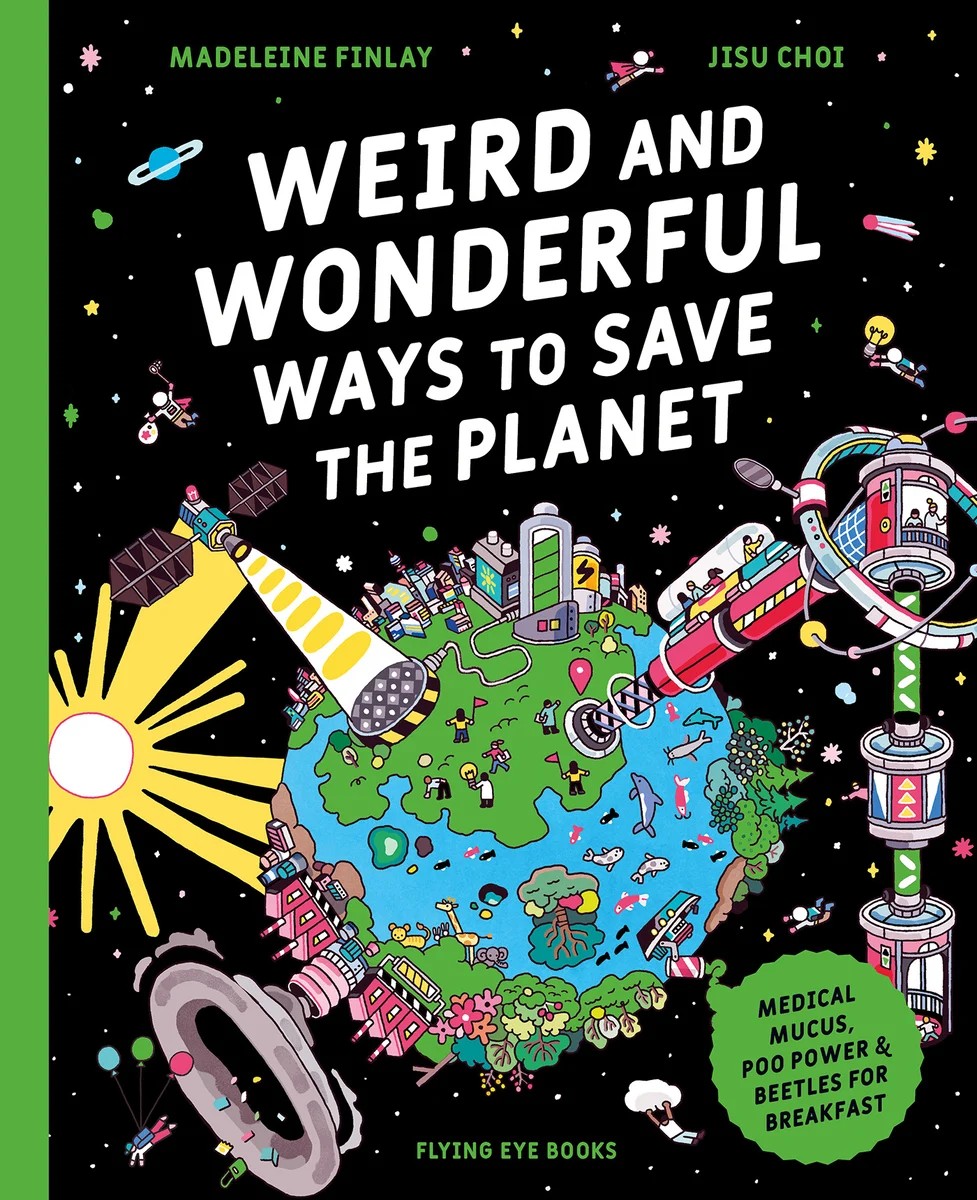 Still looking for gifts for the young ones in your life?
Still looking for gifts for the young ones in your life?
Our Kids' & YA Gift Issue has books about art that ask readers to draw directly on the page, guides that teach how to complete "magical" experiments, and nonfiction about the history of dogs, as well as zany ways to save the planet.
We've also included some incredible fiction: Frances Hardinge and Emily Gravett's The Forest of a Thousand Eyes gives readers a spooky illustrated adventure; Jungyoon Huh and Myungae Lee highlight the beauty of patience and kindness in Late Today.
Book Candy
Book Candy
Merriam-Webster looked up Wassail, Yule, and more: "the stories behind 8 holiday words."
---
"Good tidings we bring... of 20 new holiday romance novels," the New York Public Library noted.
---
Mental Floss showcased "7 books that somehow turned 50 in 2025."
Books for Young Cooks
Cool Cookbooks for Kids and Teens
 Did you miss our Kids' Cookbook feature? Whether the kid in your life only eats foods that are beige or snakes all the lobster off your plate, this collection of books for children and teens approaches the making and eating of food from angles any young eater can appreciate. Among our highlights: books that feature cooking as scientific experiment; recipes as part of a historical narrative; and so much more!
Did you miss our Kids' Cookbook feature? Whether the kid in your life only eats foods that are beige or snakes all the lobster off your plate, this collection of books for children and teens approaches the making and eating of food from angles any young eater can appreciate. Among our highlights: books that feature cooking as scientific experiment; recipes as part of a historical narrative; and so much more!
| Advertisement Meet belle bear! |

